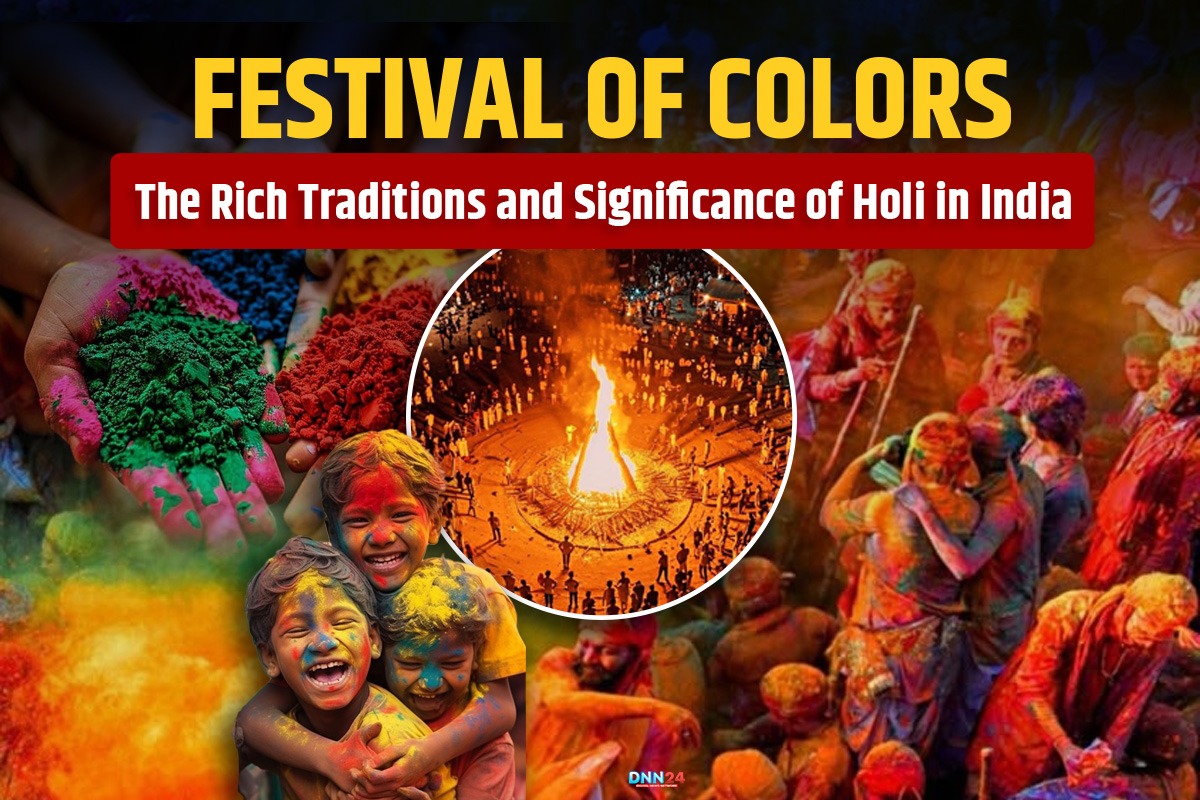Holi stands as one of India’s most vibrant and joyous festivals, celebrated with immense enthusiasm across the country. During the Hindu lunar month of Phalguna people celebrate the Festival of Colors which corresponds with late February or early March. Known primarily as the Festival of Colors, Holi represents much more than just a playful celebration – it embodies the triumph of good over evil, the arrival of spring’s fertility, and the coming together of communities in shared joy.
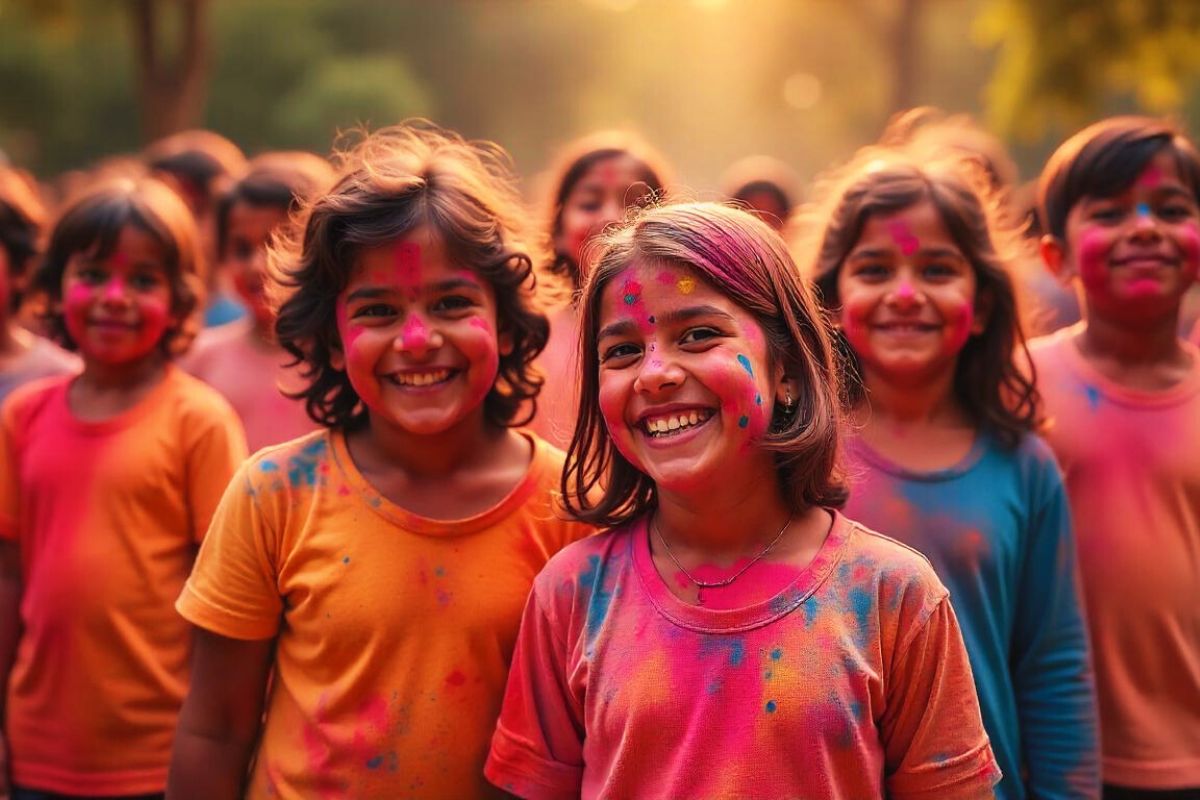
Literary documentation of the Festival of Colors dates back to the fourth century, showcasing its deep roots in Indian culture and history. While originating in India, Holi has now spread globally, with celebrations taking place in various countries around the world, though it remains most prominently celebrated across South Asia. The festival typically spans two days, beginning with evening rituals and followed by the main day of color play that has become iconic of Holi celebrations worldwide.
Historical and Mythological Significance
The origins of Holi are deeply embedded in Hindu mythology, with several legends associated with the festival’s beginnings. The most prominent and widely accepted origin story revolves around the tale of King Hiranyakashipu, his son Prahlada, and his sister Holika – a narrative that forms the foundation of Holi celebrations throughout India. Through devotion Hiranyakashipu gained his status as a powerful demon king who secured a divine protection against all forms of death according to Hindu scriptures. From this divine power he developed immense arrogance so he ordered his subjects to worship him as if he were a god.
Hiranyakashipu’s young son Prahlada, however, remained steadfastly devoted to Lord Vishnu, much to his father’s dismay and anger. The king used numerous punishments to punish his son because of the strong devotion towards Lord Vishnu yet Prahlada refused to waver. In his rage, Hiranyakashipu enlisted the help of his sister Holika, who possessed a special power that made her immune to fire.
She deceived Prahlada by seating him beside her on a pyre hoping to kill him yet remained unharmed. However, as the flames rose, a divine intervention occurred – Holika’s protective power failed her as she was using it for evil purposes, and instead, the cloak flew off her and protected the innocent Prahlada. Holika perished in the flames while Prahlada emerged unharmed due to his unwavering devotion to Lord Vishnu.
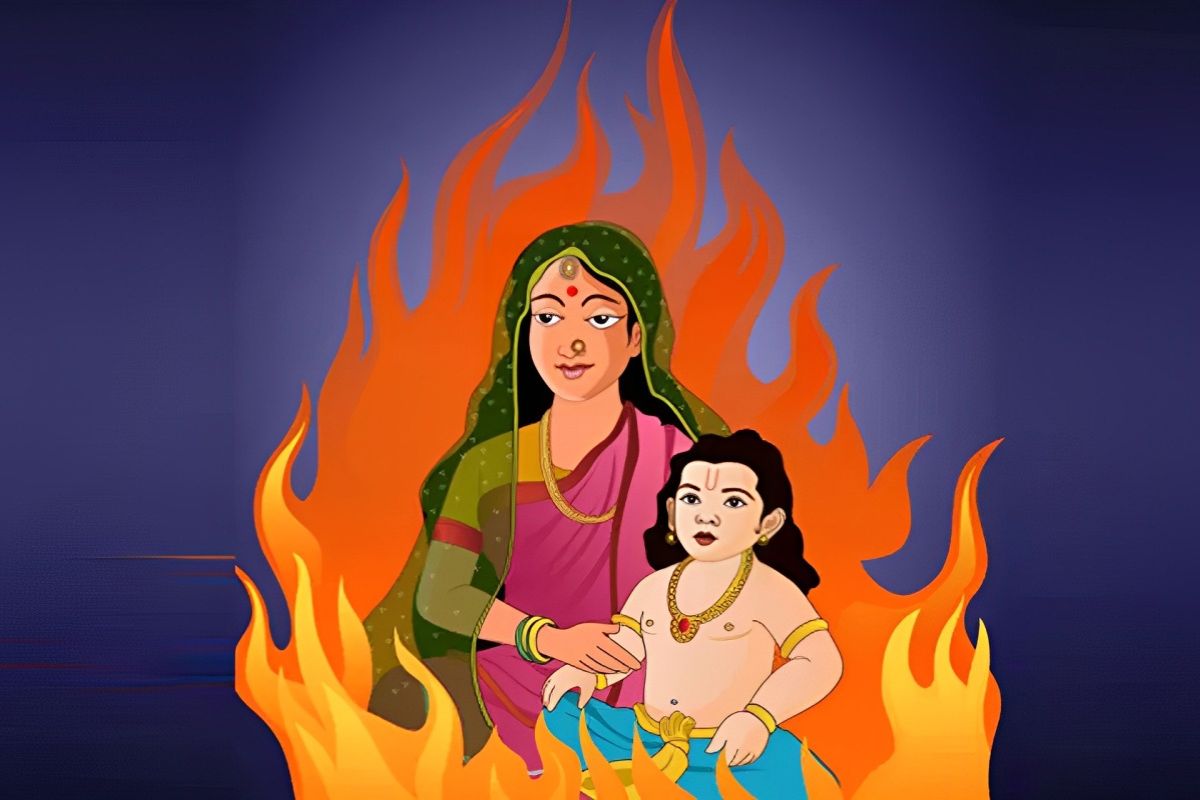
This legend symbolizes the victory of good (Prahlada) over evil (Holika and Hiranyakashipu), and the triumph of devotion over pride and arrogance. The name “Holi” itself derives from “Holika,” and the festival commemorates this victory with the ritual burning of bonfires on the eve of Holi, known as Holika Dahan. During ceremonial fire ceremonies multiple people assemble to burn evil powers while they make spiritual requests for them and their family members to flourish. This profound spiritual significance makes Holi much more than just a festival of colors – it is a celebration of the eternal victory of righteousness in Hindu philosophical tradition.
Cultural Practices and Traditions
Holi celebrations encompass a rich tapestry of cultural practices and traditions that have evolved over centuries, making it one of the most distinctive festivals in India. The festival typically begins with Holika Dahan, a ritual that takes place on the eve of Holi. During this ceremony, people gather wood and combustible materials to construct a large bonfire, symbolizing the pyre on which Holika was burned. Good triumphs over evil through the bonfire which many people observe through rituals along with prayers and clockwise walking circles. People in certain areas conduct this practice by burning cow dung cakes together with wheat stalks and coconuts into the fire as part of their ritual offerings to believe these elements destroy winter bacteria.
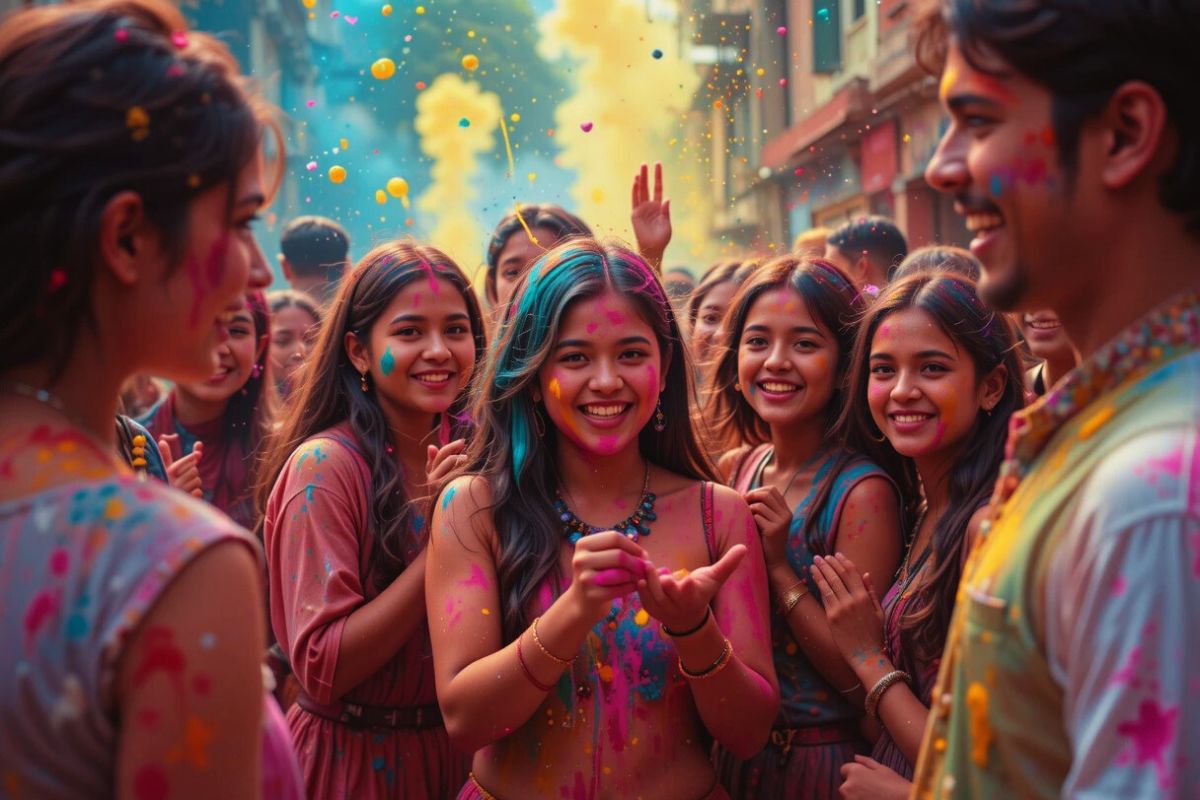
The following day marks the main celebration – the playing with colors that has become synonymous with the Festival of Colors worldwide. Individuals of all ages gather at temples and streets and parks and open spaces early in the morning to enjoy the festivities using gulal (powdered color) and pichkaris (water guns) and water balloons. The joyful atmosphere enables people to freely spread colored substances among one another through water and powder battles while enjoying their playful activities.
Throughout this festive gathering all social barriers disappear because people from every age group and sexual identity and social status and caste background join in collective play. This communal activity allows people to forget their normal social rules and positions for a time. Colors bring spiritual meaning to this festival since red stands for love and fertility and green represents new beginnings and Lord Krishna links to blue symbolism whereas yellow recalls the sacred Hindu component turmeric.

Another significant aspect of Holi celebrations is the consumption of special foods and drinks. During Holi people prepare traditional sweet dumplings named Gujiya filled with khoya and dry fruits as well as savory crackers referred to as mathri and sweet pancakes known as malpuas which are shared between family and friends together with a milk-based drink called thandai full of spices and nuts.
In many regions, particularly in northern India, bhang (a preparation of cannabis) is legally consumed during Holi celebrations, mixed into thandai or sweets. The practice dates back to the antiquity period because cannabis holds a significant religious place in Hindu mythology through its connection to Lord Shiva. The consumption of bhang during Holi is believed to enhance the festive spirit, though it remains regulated and is primarily consumed in traditional controlled settings.
Regional Variations
Holi celebrations across India exhibit fascinating regional variations, each adding a unique dimension to this colorful festival while maintaining its core essence. Perhaps the most renowned regional the Festival of Colors celebration takes place in the Krishna-centric towns of Mathura and Vrindavan in Uttar Pradesh. Mathura provides the birthplace of Lord Krishna whereas Vrindavan serves as his childhood home. The Holi celebrations here begin almost a week before the actual festival and continue for several days afterward, making it an extended celebration compared to other regions.
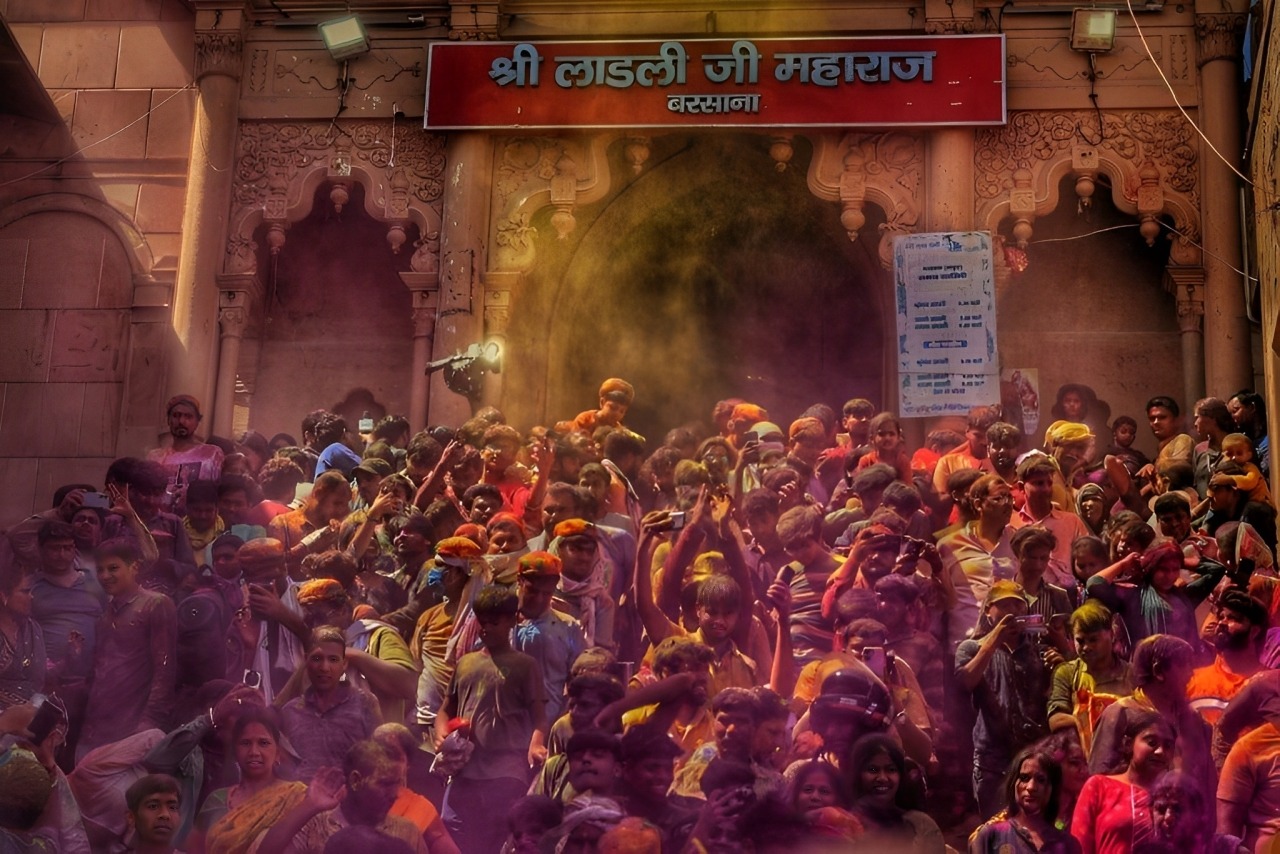
In Barsana and Nandgaon, villages near Mathura, a unique tradition called “Lathmar Holi” (stick-beating Holi) takes place. The tradition traces its origin to an amusement tale which shows Krishna paying a visit to Barsana where he teased Radha and her companions. The ladies of Barsana obeyed village custom and wielded her sticks to drive Nandgaon men from their land.
The annual tradition of Barsana women hitting Nandgaon men using wooden sticks exists today as women joyfully strike their targets but the men try avoiding being struck. Singing lewd songs leads the women to capture the men who must then perform in female attire. The culture-driven event allows thousands of visitors and photographers to experience a special cultural exchange combined with its unique role interchange every year.
The story behind Lathmar Holi traces back to Lord Krishna himself. In a legendary story before becoming an adult Krishna expressed dissatisfaction about his dark skin against Radha’s fair complexion to his mother. Yashoda offered her son to color Radha’s face, assigning the purpose to eliminate their skin tone contrast.
The suggestion from Yashoda brought Krishna much delight as he made his journey from Nandgaon to Barsana to color Radha along with her companions. The Barsana women defended themselves by chasing him with sticks resulting in the yearly celebration tradition that carries on to today. Religious sentiment emerges from the dramatic reenactment of Krishna and Radha’s divinely sacred bond which creates additional mysticism in what seems to be fun festivities.
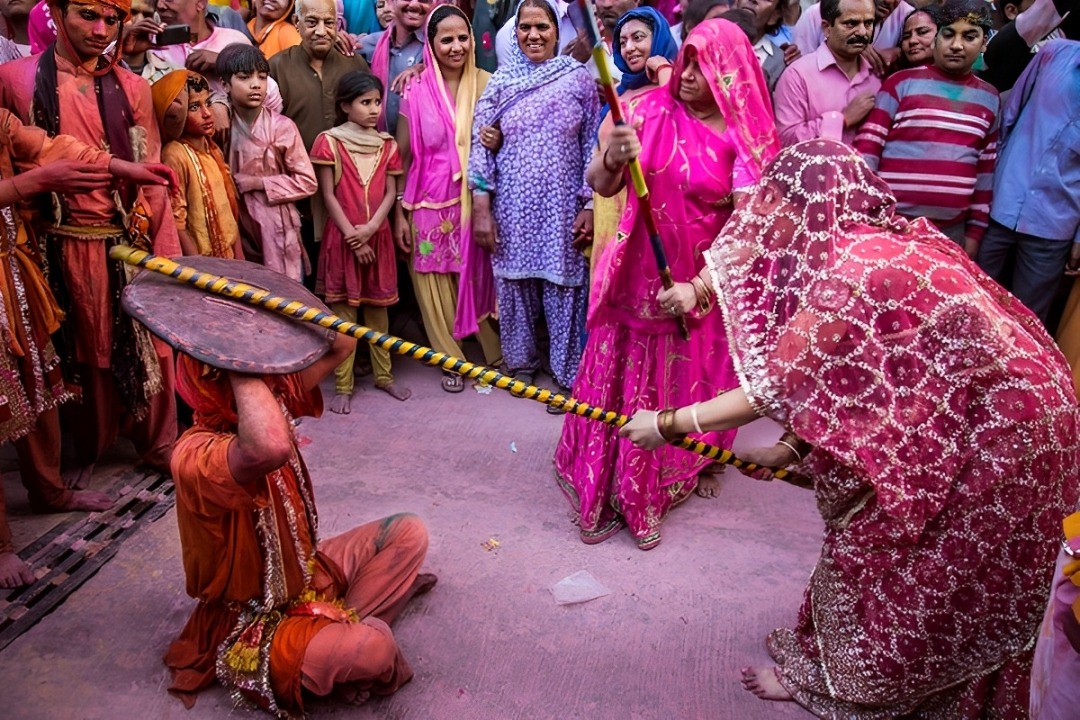
In Varanasi, one of India’s oldest and most sacred cities, a distinctive form called “Chita-Bhasma Holi” is practiced. Here, devotees including sadhus (holy men) and Aghoris (ascetic Shiva worshippers) play Holi with ashes from cremation grounds. People perform this respectful ceremony at Manikarnika Ghat while honoring Lord Shiva and recognizing the life-death cycle. Spiritual content appears in the streets of Varanasi because holy men distribute ash across their bodies as they roam while traditional decorations elsewhere lose their importance to this mysterious religious practice dedicated to holy rituals.
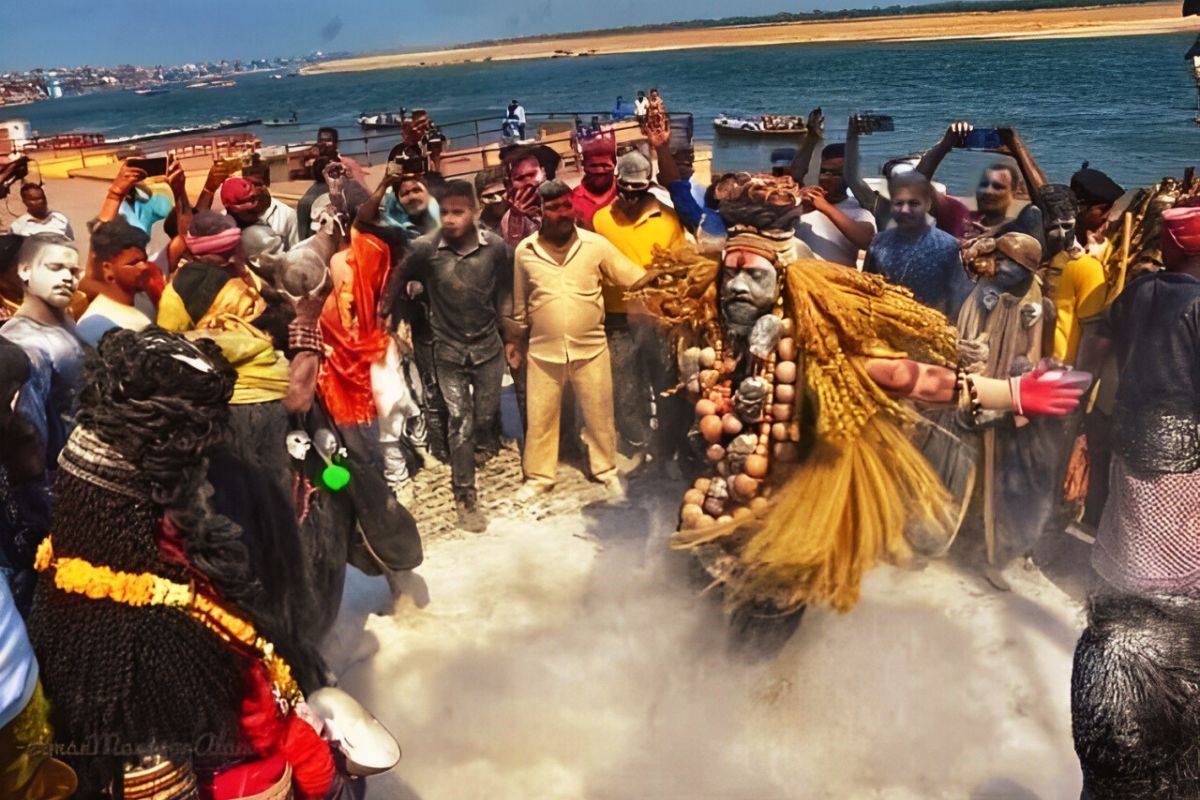
Conclusion
Holi continues to be a vibrant celebration of India’s cultural heritage, bringing together diverse communities under the common themes of joy, renewal, and harmony. Across its extended history from mythological times through regional manifestations Holi performs as a celebration which unites philosophical beliefs and cultural values of Indian civilization. Throughout the centuries communities have continued this tradition by lighting bonfires while celebrating each other with colors during springtime festivities hence bridging past periods to current celebrations while securing the preservation of beloved customs.
Also Read: Ramadan: A Sacred Month of Fasting, Revelation, and Islamic Faith Traditions
You can connect with DNN24 on Facebook, Twitter, and Instagram and subscribe to our YouTube channel.

